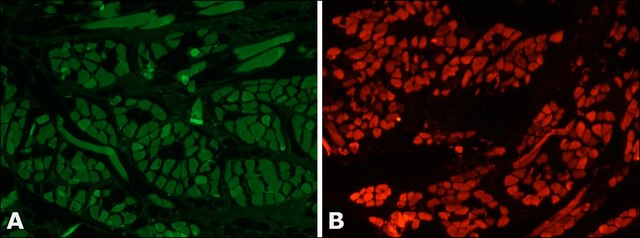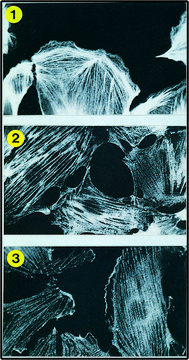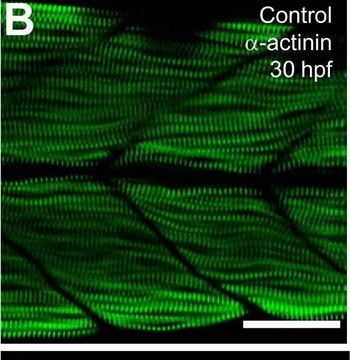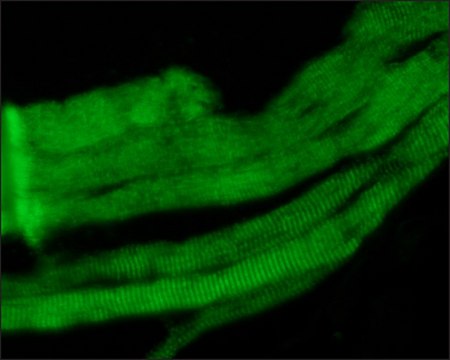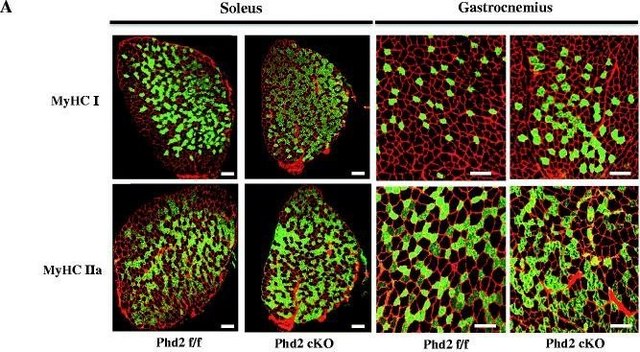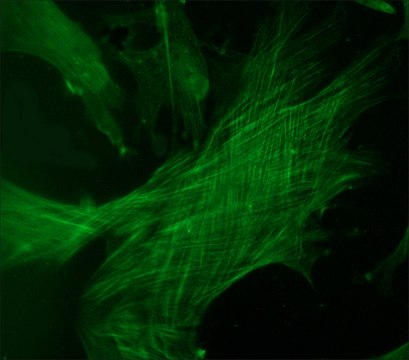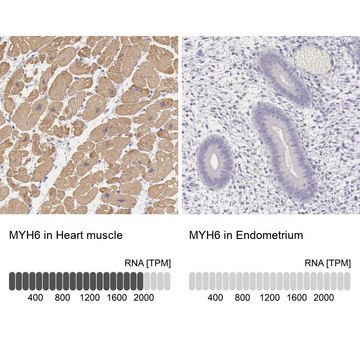AV48224
Anti-TPM2 antibody produced in rabbit
IgG fraction of antiserum
Sign Into View Organizational & Contract Pricing
All Photos(2)
Synonym(s):
Anti-AMCD1, Anti-DA1, Anti-TMSB, Anti-TropoMyosin 2 (β)
UNSPSC Code:
12352203
NACRES:
NA.41
Recommended Products
biological source
rabbit
Quality Level
conjugate
unconjugated
antibody form
IgG fraction of antiserum
antibody product type
primary antibodies
clone
polyclonal
form
buffered aqueous solution
mol wt
33 kDa
species reactivity
human, rabbit, dog, rat, mouse, bovine
concentration
0.5 mg - 1 mg/mL
technique(s)
immunohistochemistry: suitable
western blot: suitable
NCBI accession no.
UniProt accession no.
shipped in
wet ice
storage temp.
−20°C
target post-translational modification
unmodified
Gene Information
human ... TPM2(7169)
General description
TPM2 codes for beta-tropomyosin that belongs to the actin binding protein family. Mutations in TPM2 have been linked to congenital myopathies, Sheldon-Hall syndrome and cap disease.
Rabbit anti-TPM2 antibody recognizes canine, bovine, rabbit, zebrafish, chicken, human, mouse, and rat TPM2
Rabbit anti-TPM2 antibody recognizes canine, bovine, rabbit, zebrafish, chicken, human, mouse, and rat TPM2
Immunogen
Synthetic peptide directed towards the C terminal region of human TPM2
Application
Rabbit anti-TPM2 antibodies have been used for immunoblot analysis. It is also suitable for IHC applications at a concentration of 4-8 μg/ml.
Biochem/physiol Actions
TPM2 is beta-tropomyosin, an isoform of tropomyosin that is mainly expressed in slow, type 1 muscle fibers.The TPM2 gene encodes beta-tropomyosin, an isoform of tropomyosin that is mainly expressed in slow, type 1 muscle fibers (Tajsharghi et al., 2007 [PubMed 17846275]). See also TPM1 (MIM 191010), TPM3 (MIM 191030), and TPM4 (MIM 600317).[supplied by OMIM]. Publication Note: This RefSeq record includes a subset of the publications that are available for this gene. Please see the Entrez Gene record to access additional publications.
Sequence
Synthetic peptide located within the following region: AETRAEFAERSVAKLEKTIDDLEDEVYAQKMKYKAISEELDNALNDITSL
Physical form
Purified antibody supplied in 1x PBS buffer with 0.09% (w/v) sodium azide and 2% sucrose.
Disclaimer
Unless otherwise stated in our catalog or other company documentation accompanying the product(s), our products are intended for research use only and are not to be used for any other purpose, which includes but is not limited to, unauthorized commercial uses, in vitro diagnostic uses, ex vivo or in vivo therapeutic uses or any type of consumption or application to humans or animals.
WGK
WGK 3
Flash Point(F)
Not applicable
Flash Point(C)
Not applicable
Regulatory Information
新产品
Certificates of Analysis (COA)
Search for Certificates of Analysis (COA) by entering the products Lot/Batch Number. Lot and Batch Numbers can be found on a product’s label following the words ‘Lot’ or ‘Batch’.
Already Own This Product?
Find documentation for the products that you have recently purchased in the Document Library.
Jung Min Ko et al.
Journal of Korean medical science, 28(5), 780-783 (2013-05-17)
Sheldon-Hall syndrome (SHS) is a rare autosomal dominant, inherited arthrogryposis syndrome characterized by multiple congenital contractures of the distal limbs. To date, four genes that encode the skeletal muscle fiber complex have been confirmed as the causative genes. Mutations in
Minttu Marttila et al.
Human mutation, 35(7), 779-790 (2014-04-03)
Mutations affecting skeletal muscle isoforms of the tropomyosin genes may cause nemaline myopathy, cap myopathy, core-rod myopathy, congenital fiber-type disproportion, distal arthrogryposes, and Escobar syndrome. We correlate the clinical picture of these diseases with novel (19) and previously reported (31)
Vilma-Lotta Lehtokari et al.
Neuromuscular disorders : NMD, 17(6), 433-442 (2007-04-17)
"Cap myopathy" or "cap disease" is a congenital myopathy characterised by cap-like structures at the periphery of muscle fibres, consisting of disarranged thin filaments with enlarged Z discs. Here we report a deletion in the beta-tropomyosin (TPM2) gene causing cap
Carole L Moncman et al.
Experimental cell research, 319(3), 23-31 (2012-11-24)
Extraocular muscles are a unique subset of striated muscles. During postnatal development, the extraocular muscles undergo a number of myosin isoform transitions that occur between postnatal day P10 (P10) and P15. These include: (1) loss of embryonic myosin from the
Our team of scientists has experience in all areas of research including Life Science, Material Science, Chemical Synthesis, Chromatography, Analytical and many others.
Contact Technical Service